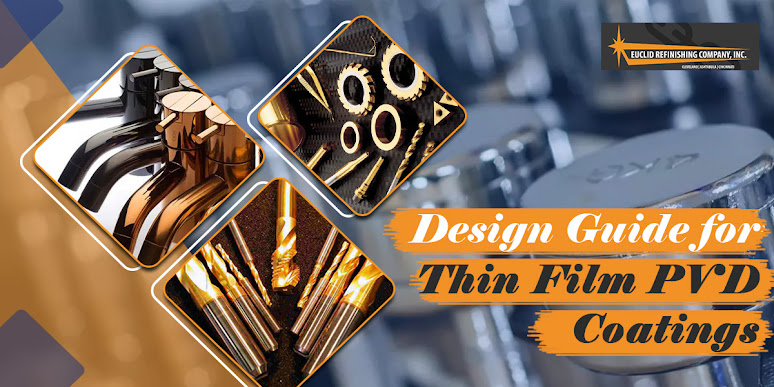Design Guide for Thin Film PVD Coatings
Design
Guide for Thin Film PVD Coatings introduces the process of thin-film deposition and the
basics of PVD coatings. It describes the different coating technologies and
covers their advantages, colors, parts, and decision-making processes. It also
includes a section on surface topography.
Surface Topography
Surface
topography is one of the primary parameters that determine the functional
properties of thin film PVD coatings. These topographic features are influenced
by the deposition conditions and process type. In addition, this type of surface
topography has a definite influence on the mechanical properties of the
coatings.
This
type of surface topography is comprised of two main layers: the surface layer
and the tribo-film. The first layer consists of a thin PVD coating. The second
layer consists of dynamically regenerating tribo-films. These films are formed
when the PVD coating comes into contact with friction.
Chemical Vapor Deposition
A
good Chemical vapor deposition (CVD) design guide should focus on a range of
factors, including the deposition rate, evaporant material, and system
geometry. A detailed knowledge of vacuum technology is important to ensure
successful deposition runs. In particular, the evaporant material and thin film
growth surface must be understood. This guide also explores the role of ions in
PVD processes and different process geometries.
This
guide is intended for designers who want to create PVD coatings for a wide
variety of applications. It describes several transfer techniques, including
sol-gel and dip coating. The guide also offers a brief overview of
fundamentals, as well as industrial practices and cost estimates.
Also,
read about Role of Industrial
Coatings Applicator
Pulsed Laser Deposition
One
of the most important developments in the field of thin-film PVD coatings is
pulsed laser deposition. This technique can deposit materials at any pressure
and offers greater flexibility than other deposition methods. It allows control
over the background pressure, substrate-to-target distance, and film density.
However, some problems have been encountered, particularly when large areas
need to be deposited. The large clusters of particles produced by this process
can introduce roughness in the film, making it a challenging process to scale.
The
first method of pulsed laser deposition was developed in 1965 by Smith and
Turner. While the process could be used for thin film deposition, the quality
of objects produced was lower than those produced by other methods.
Magnetron Sputtering
Magnetron
sputtering is a type of physical vapor deposition (PVD) process that forms thin
films on target surfaces using a closed magnetic field. This method is faster
and less expensive, and produces high-purity coatings. It is commonly used for
metallic and insulating coatings.
The
method is based on the fact that electrons are attracted to the substrate under
high-pressure gases, and a high negative voltage between the cathode and anode
initiates ionization. The ions, which are made up of positive argon, collide
with the negatively charged target material. The collision causes atoms to
eject from the plasma, propelling them onto the substrate. The process produces
high-density plasma, which increases the rate of deposition, and prevents
damage to the substrate.
Euclid Refinishing Company, Inc also known as Surftech is a small company based in
Austinburg, Ohio. It is a manufacturer of metal products that specializes in
the finishing of metal. The company provides refinishing services to various
types of buildings and businesses.


Comments
Post a Comment